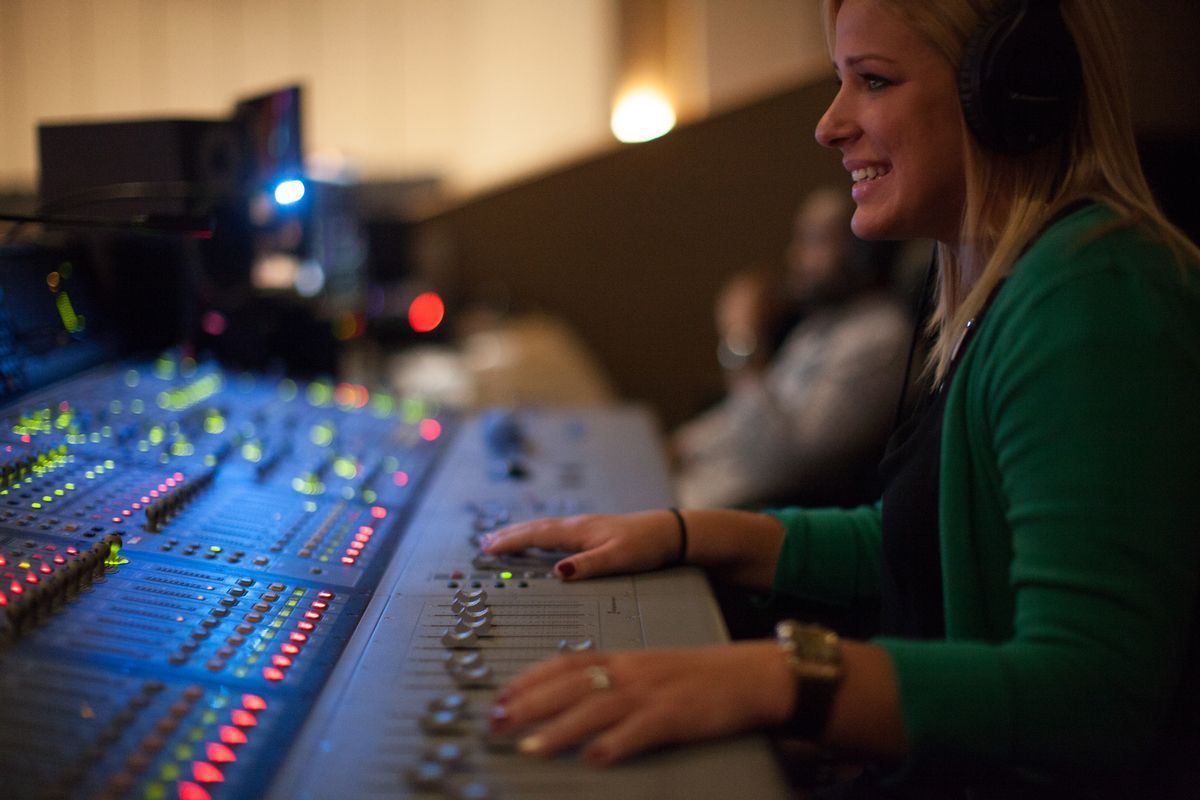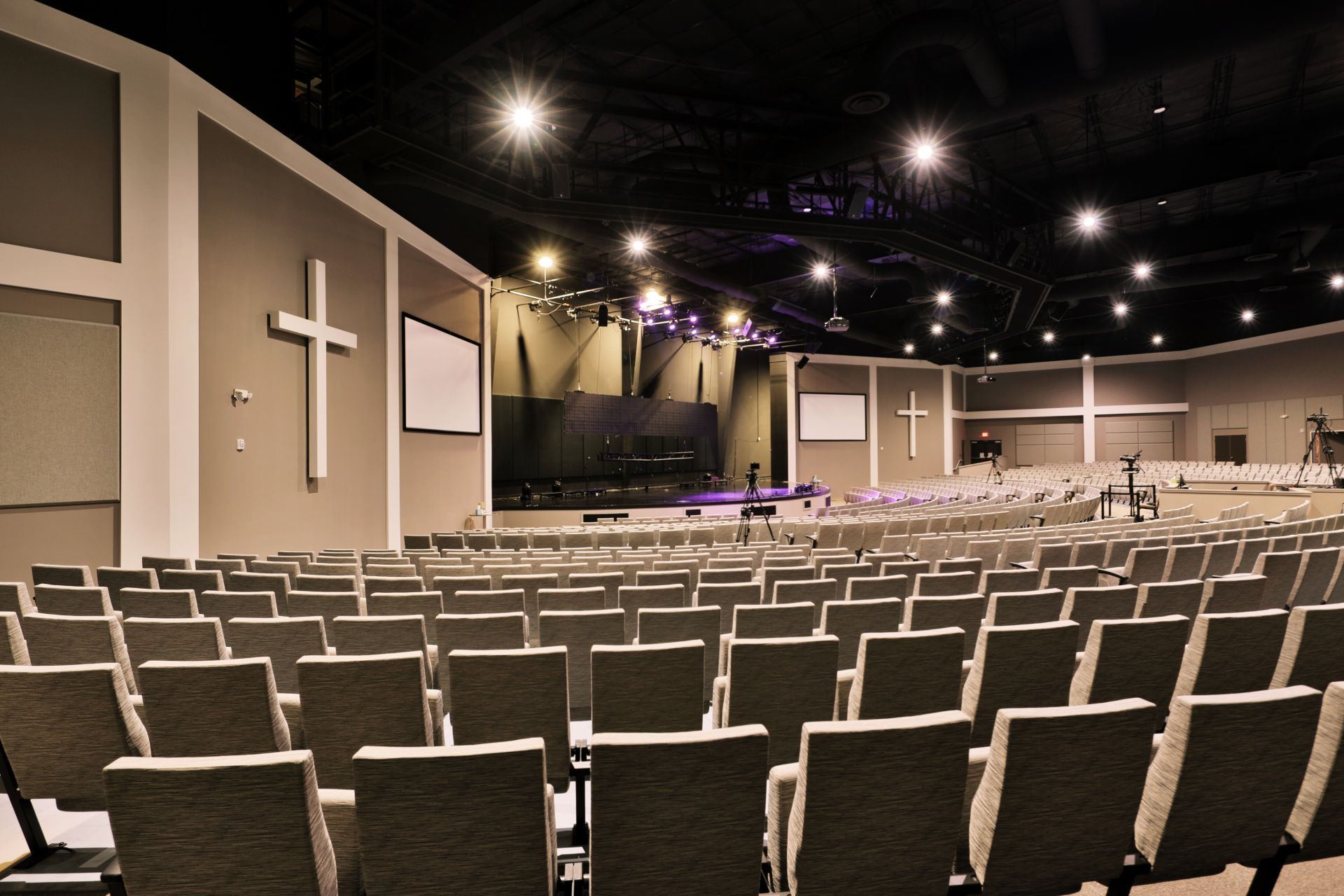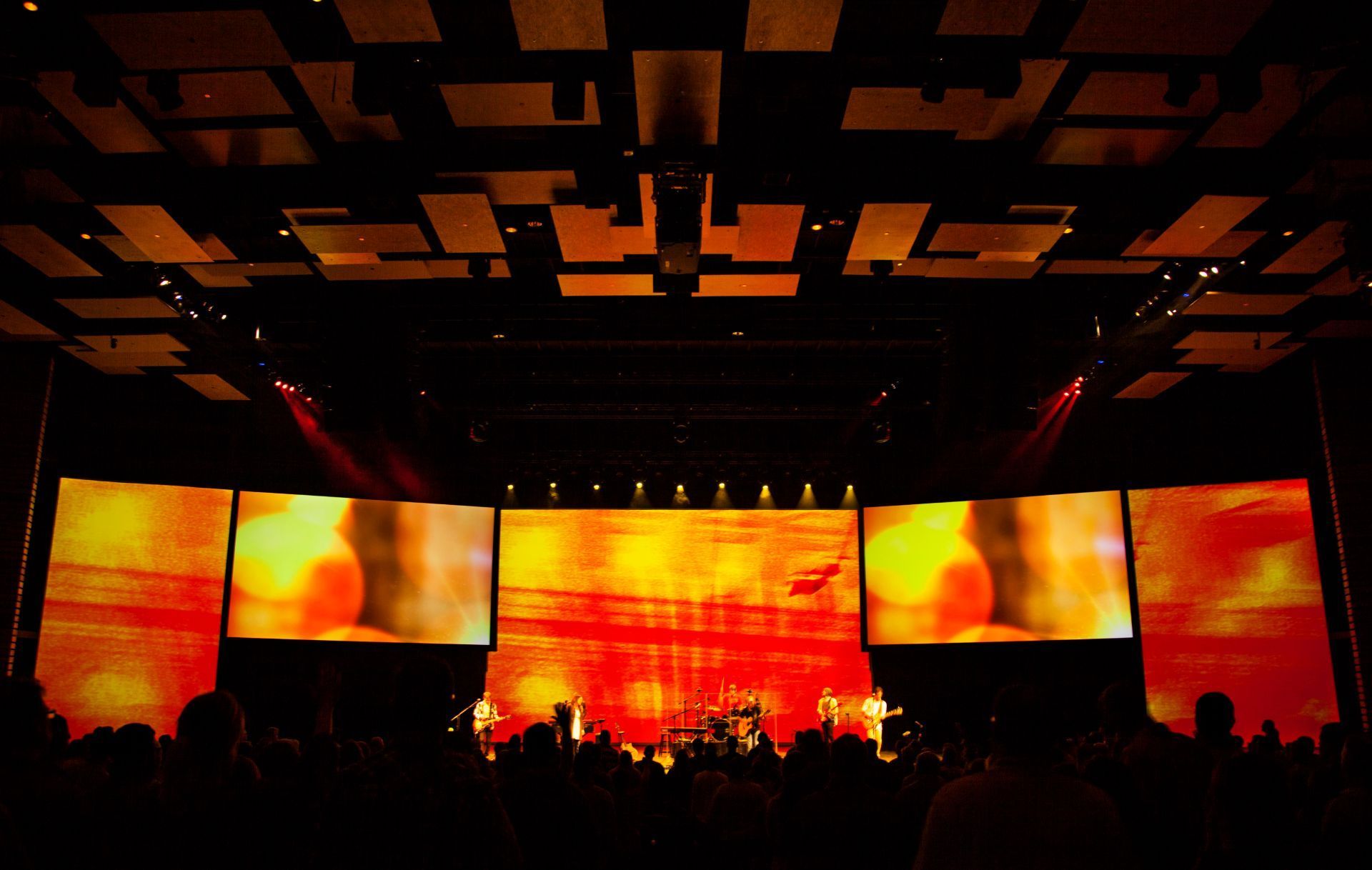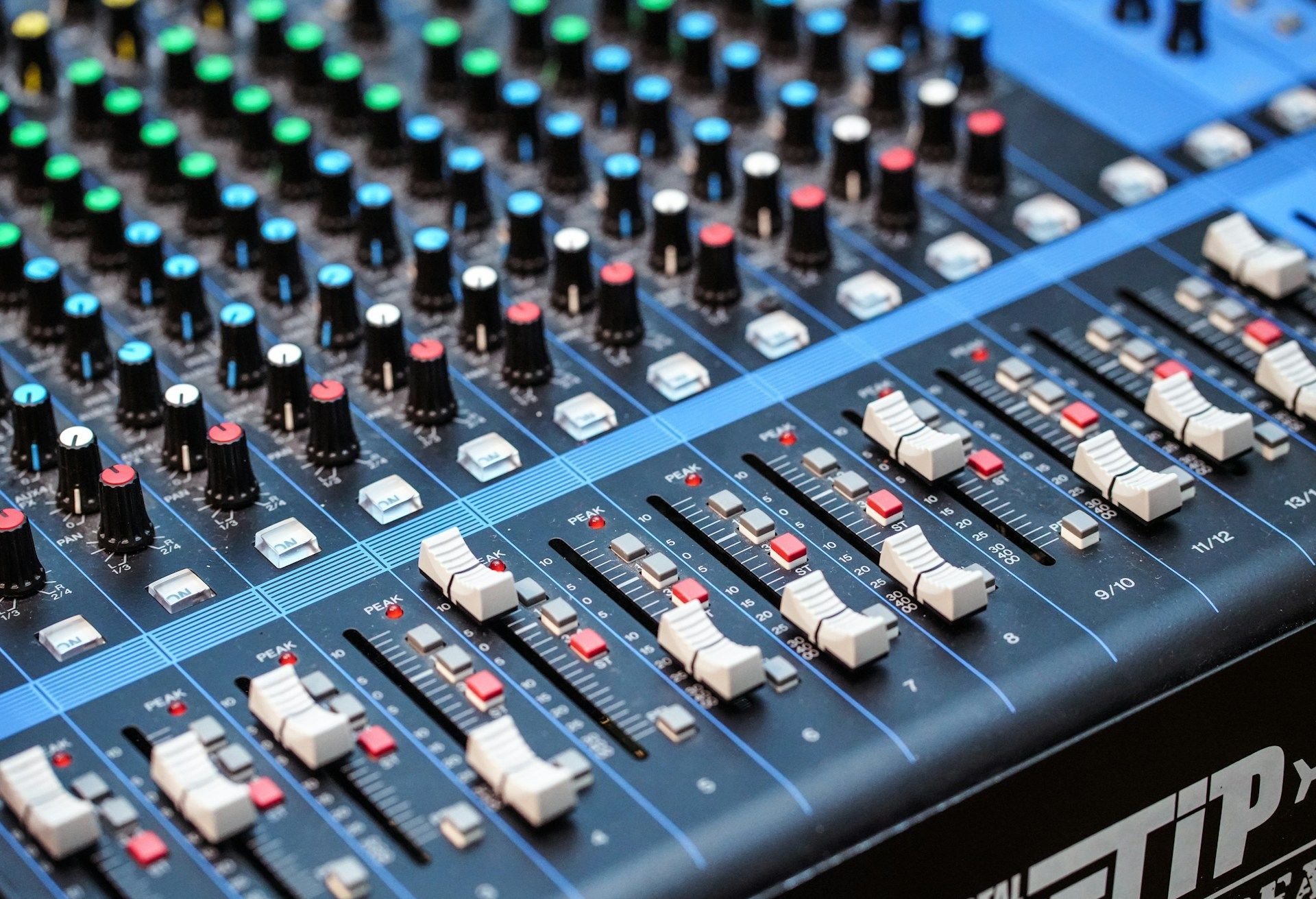Tips for Setting Up a Professional Audio System in Your Church
Setting up a professional audio system in your church with AE Global is important for ensuring clear and impactful sound during services. Good audio enhances the worship experience and helps everyone hear and engage with the message. Whether you’re speaking to a packed room or broadcasting online, high-quality sound makes a big difference.
By focusing on these essential elements and partnering with AE Global, you can set up an audio system that supports your church’s mission and connects with your congregation. High-quality sound not only improves the worship experience but also helps spread your message effectively.
Defining Mixing Areas
Designating clear mixing areas is essential for managing sound during church services. The mixing area is the control center where sound levels are adjusted and audio inputs are managed. It should be set up in a location that provides a good view of the stage and the congregation, so sound operators can monitor how the sound is carrying through the room.
A typical setup includes a mixing console, which is the main device used to control audio levels. The console should be placed on a sturdy table or stand, with comfortable seating for the operators. It's important to organize cables and connections neatly to avoid clutter, which can lead to mistakes or technical issues during a service. Label all cables and inputs clearly to make quick adjustments easier.
The mixing area also needs to be equipped with headphones and monitors. These tools help operators listen closely to the sound and make precise adjustments. Investing in good-quality church audio-visual systems ensures your team can deliver clear and professional sound, enhancing the overall worship experience for everyone attending.
Must-Have Gear & Supplies
Setting up a professional audio system requires the right gear and supplies. Here's a list of essential equipment for your church:
1. Microphones: Invest in a mix of wired and wireless mics to cater to different speakers and performers. Wireless mics provide mobility, while wired mics offer reliable sound quality.
2. Mixing Console: This is the heart of your audio system. Choose a console with enough channels to handle multiple audio sources, such as microphones, instruments, and playback devices.
3. Speakers: High-quality speakers ensure that sound is distributed evenly throughout the church. Consider installing both main speakers and additional monitors for the stage.
4. Amplifiers: Amplifiers boost the sound signal from the mixing console to the speakers. Ensure that the amplifiers are powerful enough to cover the entire space without distortion.
5. Cables and Connectors: Stock up on various audio cables and connectors, including XLR, TRS, and HDMI cables. Having extra cables on hand can be a lifesaver in case of technical issues.
6. Stands and Mounts: Microphone stands, speaker stands, and mounts are essential for positioning your equipment correctly. Adjustable stands offer flexibility for different setups.
Organizing these supplies and keeping them in good condition is crucial for a smooth audio experience. Proper care and regular maintenance of church audio and video equipment prevent disruptions and ensure a reliable performance during services.
Using high-quality gear helps in delivering clear and impactful sound, making your worship services feel more immersive and engaging.
What Is a “Good” Church Sound?
A good church sound means delivering clear and balanced audio that reaches everyone in the congregation. Achieving this involves understanding and overcoming common challenges, managing the acoustics, and using the best cables.
1. Know the Challenges
Churches often face unique sound challenges. High ceilings and large open spaces can cause echoes and make it hard for sound to carry evenly. Background noises, like air conditioning or outside traffic, can also interfere with the audio quality. Identifying these issues is the first step in creating a good sound system.
2. Control the Acoustics
Managing acoustics is crucial for achieving good sound. Start by assessing the space where you’ll be setting up. Use sound-absorbing materials like curtains, carpets, and acoustic panels to reduce echoes and improve sound quality. Positioning speakers and microphones correctly also helps control acoustics and prevents feedback.
3. Pick the Right Cables
Using high-quality cables is essential to maintaining sound integrity. Cheap or damaged cables can cause interference and degrade audio quality. Invest in durable cables that are appropriate for your equipment. For instance, XLR cables are great for microphones, while TRS cables work well for instruments and mixers.
4. Organize Your Gear
Keeping your gear organized helps in quick set-up and efficient operation. Label all your cables and store them neatly. Use racks and cases to protect your equipment and make it easy to transport. Regularly check and maintain your gear to prevent unexpected issues during services.
7 Tips To Improve Your Church Sound System
Improving your church sound system can make a big impact on the worship experience. Follow these seven tips to enhance the audio quality in your church.
Tip 1 – Position Your Speakers
Proper speaker placement ensures that sound reaches everyone in the congregation without creating dead spots or feedback. Place speakers at head height and angle them slightly downward. Avoid placing them too close to walls or corners to prevent sound reflections.
Tip 2 – Lapel Placement
Place lapel microphones about six to eight inches below the speaker’s chin. This helps pick up clear audio without catching too much breathing or rustling noises. Ensure they are securely attached and positioned away from clothing that may cause interference.
Tip 3 – Punt to a Professional
Sometimes, getting professional help is the best way to ensure high-quality sound. The experienced technicians from AE Global can assess your space, recommend the right equipment, and help with setup. This investment can save time and reduce stress in the long run.
Tip 4 – Use a Portable PA (Public Address) System
For events outside the main sanctuary, a portable PA system is a great solution. These systems are easy to set up and provide clear audio for small gatherings, outdoor services, or community events. They can also serve as a backup in case of main system issues.
Tip 5 – Record Your Sermon
Recording your sermon allows you to review and identify areas for improvement. It also provides content for members who cannot attend in person. Ensure you have a good recording setup with a dedicated microphone and recording device.
Tip 6 – Know How To Set Your Audio Levels
Properly setting audio levels helps prevent distortion and ensures clear sound. Adjust the gain and volume for each input to get a balanced mix. Use the mixing console’s level meters to check for peaking and make necessary adjustments.
Tip 7 – Have a Plan in Place
Always have a backup plan in case of technical difficulties. Keep spare cables, microphones, and other equipment on hand. Train multiple team members to operate the sound system so that you’re not dependent on a single person.
Elevate Worship With These Church Audio System Setup Tips
Creating a professional audio system in your church involves careful planning and the right equipment. Defining mixing areas, acquiring essential gear, and following a weekly checklist are key steps. Understanding what makes a good church sound and implementing expert tips can significantly improve your audio quality.
High-quality church audio-visual solutions enhance the worship experience, making your services more engaging and impactful. If you need help setting up or upgrading your church audio system, AE Global can assist with expert design, installation, and support. Contact our AVL company today to take your church sound system to the next level.











